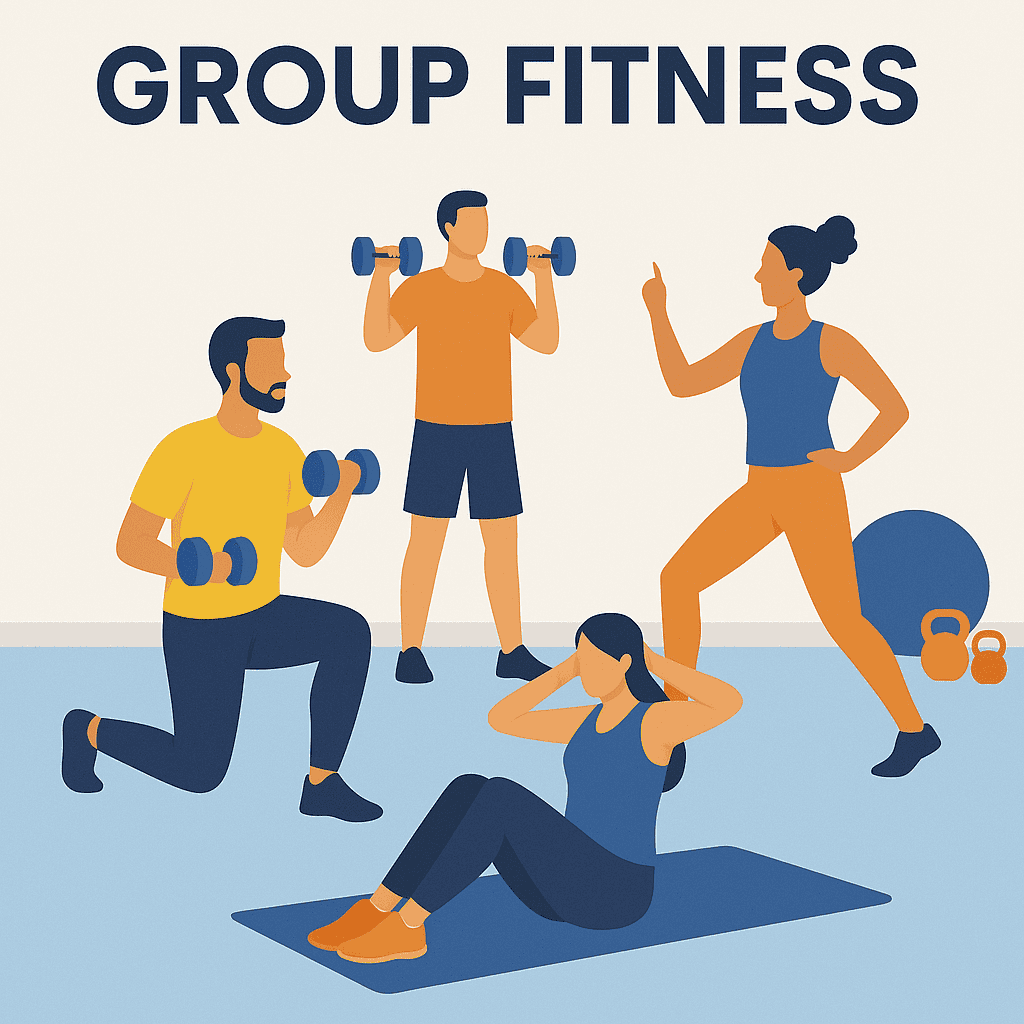How to Master Modern Interview Structure: An Expert Guide for 2025

Interview structure isn’t just about organization—it’s about creating a consistent framework that reveals the true potential of every candidate. Understanding interview best practices is crucial as it ensures that, despite the abundance of hiring tools and AI-powered platforms in 2025, the fundamental ability to conduct a well-structured interview remains the most powerful predictor of hiring success.
In fact, research shows that structured interviews are twice as effective at predicting job performance compared to unstructured conversations. However, many hiring managers still rely on gut feeling and improvised questions, leading to inconsistent results and missed opportunities. Consequently, mastering the art of structured interviews has become essential for anyone serious about building high-performing teams.
This expert guide will walk you through everything you need to know about modern interview structures—from preparation and question design to evaluation methods that actually work. Additionally, you’ll learn how to balance technical assessment with cultural fit in ways that align perfectly with 2025’s evolving workplace dynamics.
Whether you’re an experienced hiring manager looking to refine your approach or new to the interviewing process, this comprehensive roadmap will help you transform your interviews from subjective conversations into strategic talent evaluations that consistently identify your next star performers.
Understanding the Purpose of a Structured Interview
Structured interviews have become the cornerstone of effective hiring processes for forward-thinking organizations. At their core, structured interviews are standardized assessment methods where each candidate faces identical questions in the same order, with responses evaluated using consistent criteria.
Why structure matters in 2025
In today’s increasingly regulated hiring environment, structure has become more crucial than ever. Research demonstrates that structured interviews have higher predictive validity in assessing job performance [1], making them a powerful tool for identifying the right talent. Furthermore, structured interviews are up to twice as effective at predicting job performance compared to unstructured alternatives [2], giving organizations a competitive advantage in securing top talent.
As companies face growing scrutiny over hiring practices, structured interviews provide a transparent and defensible process. This approach is particularly valuable in highly regulated industries where documentation of fair hiring decisions is essential [2]. Moreover, leadership alignment around structured interviewing reflects an organization’s commitment to fairness and consistency—values that resonate strongly with candidates in 2025’s workplace culture [3].
The difference between structured and unstructured interviews
Structured and unstructured interviews represent fundamentally different approaches to candidate assessment:
- Structured interviews: Use predetermined questions asked in consistent order, focus on job-related competencies, employ standardized evaluation criteria, and produce primarily quantitative data [4]
- Unstructured interviews: Follow conversational format, allow for improvisation, generate qualitative information, and vary significantly between candidates [4]
Unlike unstructured interviews, which flow freely as conversations, structured interviews maintain rigid parameters. While unstructured interviews might seem ideal for reducing candidate anxiety, they often lead to confusion about expectations and can cause candidates to question an organization’s professionalism [5]. Unstructured formats also create opportunities for bias to influence hiring decisions and make objective comparisons between candidates virtually impossible.
How structure improves fairness and consistency
Structured interviews create a level playing field for all candidates, ensuring each person is assessed based on identical criteria. This standardization significantly reduces the risk of unconscious bias influencing hiring decisions [6]. By focusing evaluations on job-related factors rather than irrelevant personal details, organizations can make more objective talent assessments.
Specifically, structured interviews help minimize biases like halo effect (where one positive trait influences overall impression), horn effect (where one negative trait colors entire perception), and affinity bias (preference for people similar to oneself) [7]. This improved objectivity leads to more diverse hiring outcomes [2] and better representation of underrepresented groups in medicine and other fields [7].
Beyond fairness, consistency in questioning and evaluation makes comparing candidates significantly more straightforward. When everyone answers the same questions, hiring teams can directly assess how each candidate demonstrated key competencies against established criteria [2]. This systematic approach yields more reliable data for decision-making while simultaneously providing candidates with a more professional experience.
The structured format also ensures legal compliance, as it helps organizations demonstrate that their selection process is based on job-relevant factors, reducing potential legal challenges [8]. This protection is particularly valuable as regulatory scrutiny of hiring practices continues to intensify.
Preparing for the Interview: Laying the Groundwork
Successful structured interviews begin long before the first candidate walks through the door. Laying proper groundwork ensures you identify the right talent while maximizing the predictive power of your interview process.
Define the role and key competencies
Effective interview preparation starts with a thorough job analysis that identifies precisely what the position entails. First, compile a comprehensive list of both hard and soft skills your ideal candidate should possess. Subsequently, determine which competencies are core versus secondary, placing appropriate weight on each based on their importance to daily responsibilities.
Following a structured approach, you should:
- Match specific skills to job tasks based on thorough job analysis
- Define what each competency means in the context of your organization
- Divide competencies into core (essential) and secondary (desirable) categories
“A structured interview is an assessment method designed to measure job-related competencies of candidates by systematically inquiring about their behavior in past experiences and/or their proposed behavior in hypothetical situations,” according to the Office of Personnel Management [9].
Build a candidate evaluation framework
Once you’ve identified key competencies, create standardized evaluation criteria that all interviewers will use consistently. This framework should include:
- A clear scoring system
- Detailed definitions for each scoring level
- Behavioral examples that illustrate different performance levels
Accordingly, this structured approach ensures “all responses are evaluated using the same rating scale and standards for acceptable answers” [9]. Furthermore, training hiring managers on evaluation procedures helps maintain consistency and reduces personal bias throughout the process.
Most importantly, document your evaluation framework thoroughly so it can be referenced during post-interview discussions and provide justification for hiring decisions if needed.
Choose the right interview format
Interview formats vary widely, each offering distinct advantages depending on your hiring goals. Individual interviews facilitate one-on-one connection, whereas panel interviews gather multiple perspectives simultaneously. Additionally, technical interviews might be appropriate for roles requiring specialized knowledge.
When selecting a format, consider:
- The complexity of the position
- Time constraints and logistical considerations
- The need for diverse evaluator perspectives
Essentially, “structuring an interview according to a specific format depends on several factors. The job industry, specific role requirements and a company’s policies can all influence an employer’s choice in the interview format” [10].
Review resumes and online presence
Prior to conducting interviews, thoroughly review each candidate’s resume and online presence. This preliminary research helps customize your approach and provides context for their responses during the interview.
During this phase:
- Identify areas requiring clarification or deeper exploration
- Note alignment between stated competencies and role requirements
- Research the candidate’s professional background and accomplishments
“It is essential that you understand the history and company culture of your potential employer before you even arrive at your interview,” notes one university career center [11]. The same principle applies to interviewers—understanding a candidate’s background before they arrive demonstrates professionalism and allows for more substantive conversation.
By establishing this foundation before the first interview begins, you dramatically increase your chances of identifying candidates who will truly excel in the role.
Designing the Interview for Maximum Insight
Crafting insightful interview questions is the cornerstone of an effective interview structure that reveals candidates’ true capabilities. Once you’ve established the groundwork, designing the right questions becomes your next crucial step.
Write behavioral and situational questions
Behavioral and situational questions form the backbone of structured interviews, each serving distinct purposes. Behavioral questions focus on past experiences, typically beginning with phrases like “Tell me about a time when…” [12]. These questions assess specific skills such as problem-solving, teamwork, and communication by examining how candidates handled previous situations.
Situational questions, alternatively, present hypothetical scenarios that begin with “What would you do if…” [13]. Unlike behavioral questions that look backward, situational questions look forward, allowing employers to place all candidates in identical hypothetical situations for better comparison [13].
To maximize insights:
- Align questions directly with the competencies identified for the role
- Focus on specific skills required by the position, such as time management or teamwork
- Create a mix of both question types to evaluate both past performance and future potential
Use the STAR method for consistency
The STAR method provides a structured framework for both asking and evaluating responses to behavioral questions. This approach ensures candidates provide complete answers with sufficient detail for proper assessment:
- Situation: The context and background of the experience
- Task: The specific responsibility or challenge faced
- Action: The steps taken to address the situation
- Result: The outcomes achieved through those actions [14]
When implementing this method, train interviewers to listen for all four components in responses. Furthermore, encourage candidates to structure their answers using this framework, which helps them provide comprehensive responses while giving you consistent data points for evaluation [14].
Include role-specific and technical questions
Beyond behavioral and situational questions, include questions that directly assess technical abilities required for the role. Technical interview questions typically fall into three categories:
- Knowledge-based questions that test understanding of concepts
- Problem-solving scenarios that evaluate practical application
- Experience-based inquiries about specific tools or technologies [15]
These questions should be standardized across candidates to maintain fairness while ensuring they’re directly relevant to job requirements. Notably, “asking about technical qualifications shouldn’t count for everything in the hiring process, but they certainly come in handy in helping you distinguish who has the right technical knowledge for the job” [16].
Plan for cultural fit assessment
Cultural fit assessment requires thoughtful design to avoid bias while identifying candidates who will thrive in your environment. Effective cultural fit questions evaluate alignment with company values rather than personal preferences.
Sample questions might include:
- “Which of our core values resonates with you the most?” [17]
- “How do you contribute to a positive and inclusive team environment?” [17]
- “How do you define work-life balance?” [17]
Yet, it’s essential to remember that “culture fit assessment is not just about finding a candidate whom you believe will fit your organizational culture. It’s essential that they feel like they’ll be a good fit too” [18]. Therefore, incorporate opportunities for candidates to evaluate your culture as well.
Running the Interview: Best Practices in Action
Executing a well-designed interview structure separates exceptional hiring processes from mediocre ones. How you conduct the interview significantly impacts candidate experience and the quality of insights gathered.
Start with a clear structure and expectations
Begin by greeting candidates warmly to establish rapport and reduce their anxiety [5]. Introduce yourself and explain the interview format upfront. “Providing the candidate with an overview of the interview format” helps set clear expectations [19]. This initial step creates a foundation for honest communication throughout the interview.
First, briefly describe the role and any special requirements such as travel or overtime [19]. Then, explain that you’ll be asking structured questions, taking notes, and allowing time for their questions at the end. Importantly, “informing candidates that they are about to engage in a structured interview process and detailing the benefits” dramatically improves their impression of both the interview experience and your company [5].
Ask open-ended questions and follow-ups
Open-ended questions yield richer insights than closed questions that require only yes/no answers. As noted by research, “when you ask people to explain things, they often reveal surprising mental models, problem-solving strategies, hopes, and fears” [20]. These questions typically begin with phrases like “Tell me about…” or “Walk me through…” [20].
After each response, use probing questions to gather additional information:
- “Tell me more about that”
- “What do you mean by that?”
- “Can you expand on that?”
- “Why do you think that?” [20]
Use practical assessments where needed
For roles requiring specific technical skills, practical assessments provide direct evidence of capabilities. These might include role-playing exercises, group discussions around hypothetical business problems, or technical demonstrations [21]. When implementing assessments, ensure they closely mirror actual job tasks for maximum relevance.
Encourage candidate questions
Allocate specific time for candidates to ask questions, typically 15 minutes at the interview’s end [19]. The questions candidates ask often reveal their priorities, research depth, and understanding of the position [22]. This two-way exchange helps them evaluate if your organization meets their needs.
Maintain professionalism throughout
Throughout the interview, practice active listening through small nods, verbal acknowledgments, and appropriate eye contact [23]. Score each answer immediately after it’s given for maximum accuracy [24]. This approach ensures you grade based on immediate impressions rather than trying to recall responses later.
Finally, when closing the interview, inform candidates about next steps and expected timeframes [24]. This professional courtesy demonstrates respect for their time and maintains a positive impression regardless of hiring outcome.
Post-Interview Evaluation and Decision Making
The evaluation phase of the interview process determines whether your structured approach actually yields the right hiring decisions. Effective assessment turns interview data into actionable insights while maintaining objectivity and fairness throughout.
Use scorecards and evaluation rubrics
Interview scorecards transform subjective impressions into quantifiable data points. Effective scorecards include consistent rating systems, specific job-related criteria, and clearly defined standards for each performance level. Indeed, research shows that structured scoring systems are more predictive of job performance than unstructured evaluations [4].
Design your rubric with quality anchors that define each rating level clearly. For instance, a 4-point scale might range from “underdeveloped” to “proficient,” with specific examples defining each level [25]. This standardization helps interviewers match candidate responses to objective criteria, reducing personal bias.
Debrief with the interview panel
Immediately after interviews conclude, gather all interviewers for a structured debrief session. The hiring manager should lead this discussion, reviewing each interviewer’s scorecard while encouraging open dialog about the candidate’s performance [26].
During debriefs, address any scoring discrepancies between interviewers by focusing on evidence-based observations rather than feelings. Ask probing questions like, “Can you remember when you first started to feel that way about the candidate?” to uncover specific examples supporting their assessment [27].
Make data-driven hiring decisions
When comparing candidates, create visual representations of assessment data such as bar graphs or charts to identify patterns across multiple criteria [28]. Consider grouping candidates into three tiers—minimally qualified, qualified, and highly qualified—rather than relying solely on numerical scores [29].
Effective data-driven decisions balance:
- Alignment with predefined role competencies
- Quantitative scorecard ratings
- Qualitative observations from multiple interviewers
Provide feedback to all candidates
Structured feedback benefits both hired and rejected candidates. For those not selected, provide specific, tactful insights focusing on job-related criteria rather than personal attributes [30]. Avoid vague phrases like “we wanted someone with more relevant experience” in favor of concrete, actionable feedback [30].
For successful candidates, detailed feedback sets expectations and highlights development areas, improving their eventual onboarding experience [31].
Mastering the Modern Interview: Final Thoughts
Structured interviews stand as the cornerstone of effective hiring in 2025’s competitive talent landscape. Throughout this guide, we’ve explored how properly structured interviews provide twice the predictive power of unstructured conversations while simultaneously reducing bias and improving candidate experience.
Successful implementation requires deliberate preparation—defining key competencies, building evaluation frameworks, and designing questions that truly reveal candidate capabilities. The STAR method, behavioral questioning, and thoughtful cultural assessment work together to create a comprehensive picture of each applicant.
Professional execution matters equally. Clear expectations, active listening, and consistent evaluation transform theoretical interview structures into practical hiring tools. Your structured approach should feel natural to candidates while providing your team with reliable, comparable data points.
Undoubtedly, mastering structured interviews takes practice. Many hiring managers initially resist abandoning the comfort of improvised conversations. Nevertheless, the evidence speaks for itself—structured approaches consistently identify better talent, reduce turnover, and protect organizations from potential legal challenges.
Last but certainly not least, remember that interview structure doesn’t mean rigidity. The best interviewers balance consistency with authentic human connection, following standardized protocols while still making candidates feel valued and understood.
Whether you’re refining an existing process or building one from scratch, implementing the strategies outlined in this guide will transform your interviews from subjective conversations into strategic talent assessments that consistently identify your next star performers. After all, your organization’s future depends on finding the right people—and structured interviews remain your most powerful tool for doing exactly that.
Ready to take your hiring process to the next level? Explore our site to discover how our staffing solutions and expert guidance can help you build a stronger, more reliable workforce. Whether you need help refining your interview approach or finding top-tier talent, our team is here to support you every step of the way. Contact us today to learn how we can help you turn great interview strategies into even greater hires.
References
[1] – https://www.morrisbixby.com/2024/08/23/the-science-of-structured-interviews-best-practices-for-consistent-evaluation/
[2] – https://therecruitmentorg.com/blog/why-structured-interviews-lead-to-more-consistent-hiring
[3] – https://intercom.help/halo-strategies/en/articles/9809494-implement-a-structured-interview-process-ensuring-fairness-and-consistency
[4] – https://rework.withgoogle.com/en/guides/hiring-use-structured-interviewing
[5] – https://www.forbes.com/councils/forbeshumanresourcescouncil/2023/04/12/improve-the-candidate-experience-with-structured-interviewing/
[6] – https://www.fcs-careers.com/workplace-insights/dei/conducting-structured-interviews-for-fairness-and-equal-opportunity-in-recruitment/
[7] – https://pmc.ncbi.nlm.nih.gov/articles/PMC9553626/
[8] – https://www.recruiterslineup.com/structured-interviews-definition-benefits-challenges-examples/
[9] – https://www.opm.gov/policy-data-oversight/assessment-and-selection/structured-interviews/
[10] – https://www.indeed.com/career-advice/interviewing/interview-format
[11] – https://sc.edu/about/offices_and_divisions/career_center/student_services/prep_for_interviews/pre-interview_research/
[12] – https://www.indeed.com/career-advice/interviewing/behavioral-interview-questions
[13] – https://careers.northeastern.edu/article/interview-type-behavioral-and-situational/
[14] – https://nationalcareers.service.gov.uk/careers-advice/interview-advice/the-star-method
[15] – https://www.indeed.com/career-advice/interviewing/common-technical-interview-questions-and-answers
[16] – https://www.matchtech.com/looking-to-hire/interviews-and-testing/11-must-ask-interview-questions-for-technical-candidates
[17] – https://www.bamboohr.com/blog/culture-fit-interviews
[18] – https://www.aihr.com/blog/cultural-fit-assessment/
[19] – https://2009-2017.state.gov/documents/organization/107843.pdf
[20] – https://www.nngroup.com/articles/open-ended-questions/
[21] – https://www.noota.io/en/interview-assessments-guide
[22] – https://www.michaelpage.com.au/advice/management-advice/hiring/how-structure-effective-job-interviews-guide-hiring-managers
[23] – https://www.indeed.com/career-advice/interviewing/interview-structure
[24] – https://www.indeed.com/career-advice/interviewing/structured-interviews
[25] – https://www.indeed.com/hire/c/info/interview-rubrics
[26] – https://www.lever.co/blog/interview-debrief/
[27] – https://www.metaview.ai/resources/blog/how-to-run-an-effective-interview-debrief
[28] – https://sg.indeed.com/career-advice/interviewing/assessment-after-interview
[29] – https://hr.uw.edu/talent/hiring-process/interviewing/candidates-evaluation-tips-and-guidelines/
[30] – https://resources.workable.com/stories-and-insights/giving-interview-feedback
[31] – https://www.noota.io/en/examples-interview-feedback









